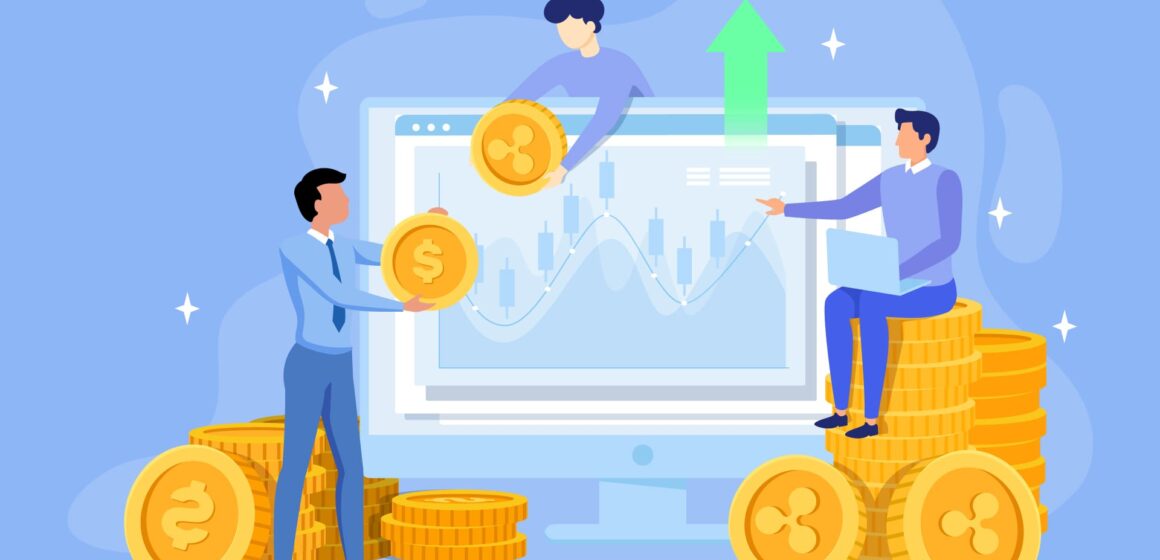A very few virtual currencies have made headlines in the competitive crypto market as Ripple. While enjoying the privilege of being a digital payment network and an altcoin, Ripple boasts a market capitalization of over $30 billion and sits proudly at the third spot after BTC and ETH.
It all started way back in 2012 when Jed McCaleb thought of developing a peer-to-peer payment system that banks and financial institutions can rely on for conducting international fund transfers. To facilitate these transfers, Ripple, which is the brainchild of the for-profit private company Ripple Labs, developed an open-source protocol called RippleNet. Much like other cryptocurrencies, Ripple uses the distributed XRP Ledger to record the transactions.
To contain the cost and speed of the transaction, Ripple released its crypto token called XRP. In simpler words, XRP acts as a bridge between the assets (like fiat currencies or commodities) being exchanged or transferred across RippleNet. However, people can buy XRP and use it for settling remittances. We are here with the answers to know what makes Ripple or XRP a potential investment.
Benefits of Ripple/XRP
Ripple has so much to offer to both the institutional payment service providers and the usual investors that it does not seem to stop any sooner.
- Decentralized Payment System: Ripple is a decentralized payment network, for its RippleNet and XRP Ledger are built using distributed open-source technology. RippleNet hosts a network of validators (financial institutions) that allows the transfer of value quickly and reliably.
- Secure and Cheap Token: Ripple uses an advanced Ripple protocol consensus algorithm to carry out international remittances of fiat or digital currencies and commodities in exchange for XRP via the secure RippleNet. Besides, the supply of XRP at a fixed rate of one billion tokens per month keeps its price relatively low at less than a dollar, making it a less risky and more affordable investment ever.
- No Mining Required: Ripple is different from its counterparts in its no mining requirement. Ripple Labs has already mined a total of 100 billion XRPs and keeps control of over 60 billion XRPs. The remaining XRPs are available for investors and circulated in the market gradually to prevent a price crash.
- Transaction Speed and Fees: Unlike traditional payment systems that might take days or popular cryptos that would require hours, Ripple transactions are processed in 3-4 seconds. Similarly, Ripple charges virtually no transaction fees or less than half a cent.
- Scalability and Stability: Ripple is highly scalable and offers high throughput by performing approximately 1,500 transactions every second. Its ability to do this consistently and accurately decreases the overall waiting time for transactions. The massive fluctuation in XRP price is a rare occasion, and often its value stays stable.
XRP/Ripple’s growth in the upcoming years?
Precisely, we can sum up Ripple XRP Price Prediction by reasons why XRP could see immense growth into three parts.
- Futuristic Banking: Ripple is backed by more than a hundred financial institutions and central banks globally, and the list is still growing. With partners like UBS, Barclays, Bank of America, and JP Morgan, Ripple holds a firm ground. It will instill confidence among potential investors to join RippleNet and incorporate XRP into their payment system.
- On-Demand Liquidity: Pre-funding requirement is the major challenge that most banks and financial institutions face in day-to-day international transactions. But the on-demand liquidity solution proposed by RippleNet does away with this and enables cross-border payments using XRP in real-time.
- Security and Utilization: The Ripple protocol consensus algorithm and the XRP Ledger distributed consensus ensures that the peer-to-peer network of validators verifies each transaction before it is processed and then registered to preserve transparency. Ripple is more simplified, convenient, and secure than the traditional Society for Worldwide Interbank Financial Telecommunication (SWIFT) transaction system. It will lead to its utilization by banks as a regular payment system.
Why is Ripple (XRP) a great cryptocurrency investment?
The value of Ripple stands nowhere compared to Bitcoin and Ethereum, but that is its strong point. If we look at the past price trends of XRP (2017 onwards), we will see a constant spike. Since it comes at a lower price, Ripple makes a great and cheap alternative to leading cryptocurrencies. Banks are accepting RippleNet and XRP open-heartedly. Perhaps that is the reason fiat cash exchanges like CEX have listed Ripple on their trading platforms.
Is XRP still a good investment?
Other factors worth considering when evaluating Ripple as potential investments are its staggering market capitalization and gradual supply of XRP tokens, both making XRP a safe and lucrative investment. The value of Ripple would grow with supply nearing closure and more banks jumping for it. The crypto experts expect an increase of over 300 percent in Ripple rates by the end of 2021, thanks to the growing interest from institutional investors in XRP.
Conclusion
Ripple has seen significant growth in its value over the years, especially after the Bitcoin bubble of 2017. Although Ripple aims to serve banking institutions, asset transfer via XRP empowers people with no access to banks to come into the mainstream. Its intentions are good, and relations with banks are exemplary. All eyes are now on this underrated virtual asset to top the charts, given the fact that Ripple is the third most valuable crypto as of today.

Leave a Reply